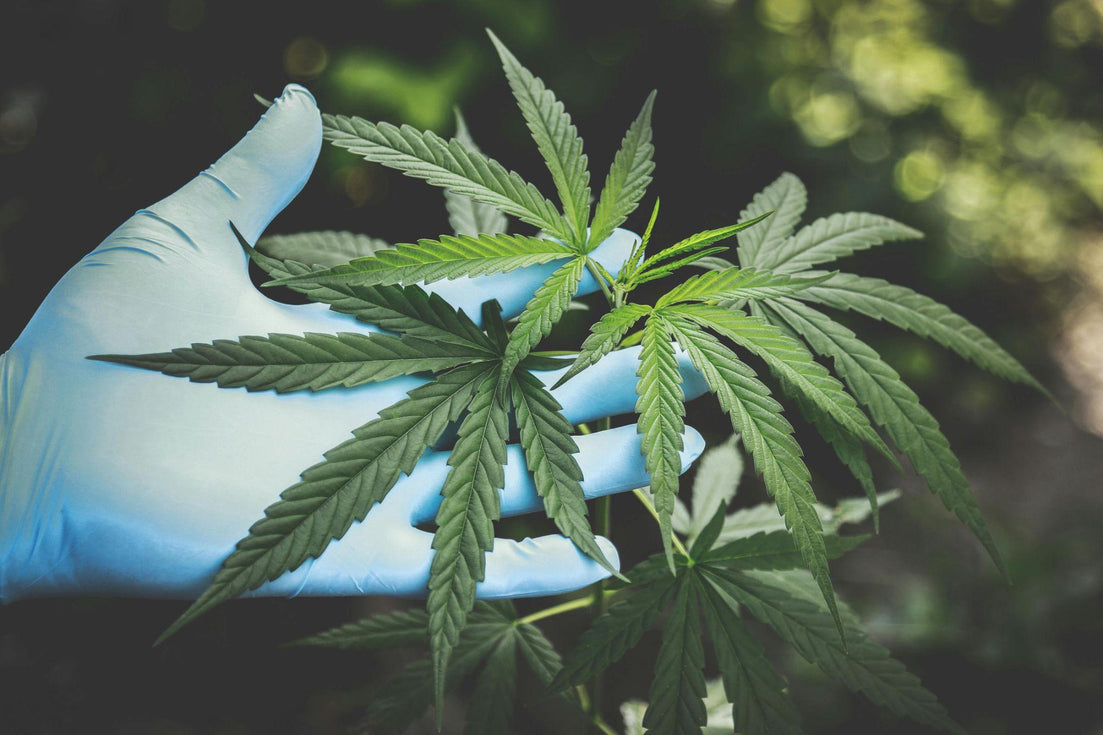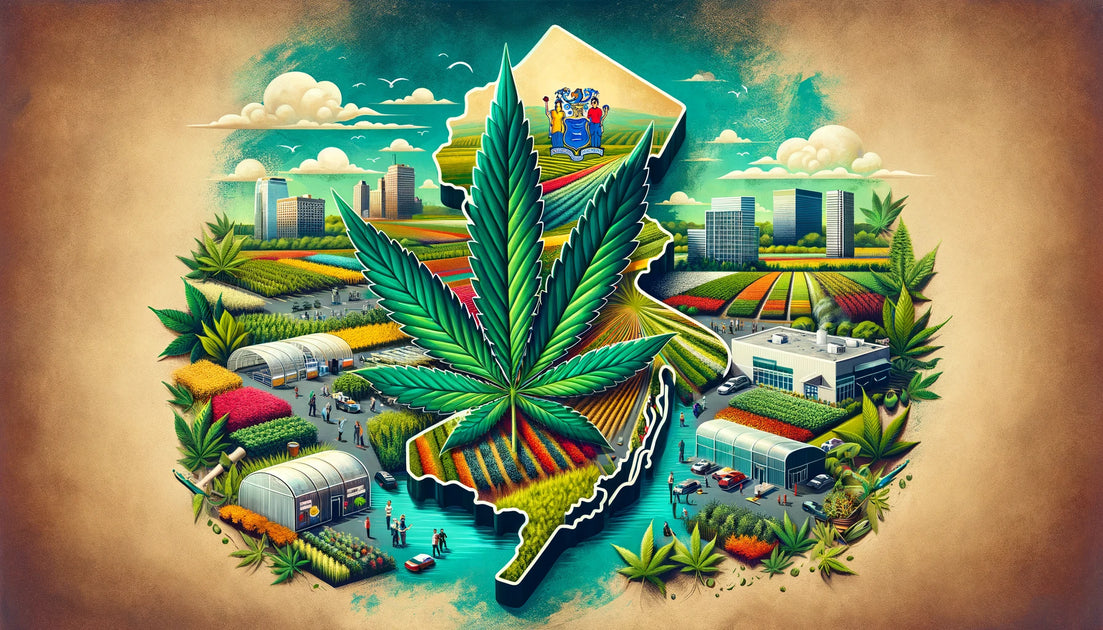Your cart is currently empty.

Ever find an old, forgotten baggie of weed tucked away in the depths of your drawer and wonder, "Does weed go bad and how long does it last?" It's like stumbling upon a vintage bottle of wine. The excitement is palpable but laced with uncertainty.
Your mind starts racing - can you still light up that aged nugget? Has its potency gone up in smoke or maybe...just maybe...has time intensified its power? Well folks, we're about to embark on a journey exploring this mystery wrapped in green plant matter.
We'll be navigating through cannabis' lifespan affected by environmental factors like temperature and humidity. Unearthing how aging influences your beloved bud's potency and quality will also be part of our voyage. And hey! Don't fret if you spot some mold; we've got guidance for that too!
It's a real treasure trove!
The Shelf Life of Cannabis: Understanding its Longevity
Does weed go bad? It's a question many cannabis enthusiasts ask. No, the answer isn't that straightforward.
Weed doesn't 'expire' in the traditional sense, but it can degrade over time if not properly stored. This process impacts both its potency and overall quality.
How Environmental Factors Influence Cannabis Longevity
A myriad of environmental factors come into play when determining how long your weed will stay good. Temperature, humidity level, and exposure to direct sunlight all affect how well your cannabis maintains its initial THC content and freshness.
To start with temperature; cool environments help keep your weed fresh for longer periods. Excessive heat can dry out the plant matter too quickly leading to harsh smoke and less flavorful buds. On the flip side, overly cold conditions could cause trichomes (the resin glands packed with cannabinoids) to become brittle and break off.
Humidity plays an equally important role in keeping weed good. The ideal relative humidity range for storing cannabis is between 59% - 63%. Too high moisture levels encourage mold growth whereas too low leads to excessively dry buds that burn faster than you’d want them to.
Research from United Nations Office on Drugs and Crime suggests light degradation contributes significantly towards reducing THC potency over time because UV rays accelerate cannabinoid breakdown processes.
Note: Under ideal storage conditions where temperature control matters are taken seriously alongside proper lighting management strategies then marijuana has potential lasting anywhere up six months at minimum possibly extending up to two years given exceptional circumstances.
The Impact of Aging on Cannabis Potency and Quality
Over time, the cannabinoids in cannabis slowly break down. This process is natural but can be accelerated by poor storage conditions. As the main psychoactive element of marijuana, THC breaks down over time and is replaced by CBN which has a substantially reduced impact.
Alright, that's it.
So, does weed go bad? Not exactly. But if you don't store it correctly, over time its quality and potency could take a hit. Things like temperature, humidity, and sunlight can all mess with your cannabis's THC levels and freshness. You want to keep it cool - too much heat dries out the plant super fast while extreme cold might lead to problems.
The Dangers of Consuming Moldy Weed
Munching on moldy grub isn't a good idea - that's for sure. But did you know the same goes for weed? That’s right. Ingesting moldy marijuana can lead to serious health issues.
How to Identify Bad Weed
Mold on cannabis, just like any other plant matter, is not always easy to spot. Often, it blends in with the trichomes - those sparkly little crystals coating your bud. It’s important then, as part of responsible use and handling of cannabis products, to know how to determine if weed has gone bad or developed mold.
A quick visual inspection should be your first step in determining whether your long-forgotten baggie is still good or not. If there are unusual discolored spots or white fuzzy patches that aren’t kief (the powdery substance full of cannabinoids), it might be time for some spring cleaning.
Your nose can also give you clues about the freshness and quality of your stash. Fresh marijuana typically smells earthy and pine-like because terpenes present in healthy buds produce this distinctive scent profile. Science tells us, however, that mold produces mustiness so if your pot doesn't smell fresh but instead reeks something akin an old basement – chances are high it's become home sweet home for molds.
Cough Cough: The Unwanted Effects Of Smoking Moldy Marijuana
We all love a good mystery – except when it comes down our lungs' health. Smoke from burning mold spores enters your respiratory system, potentially causing irritation and allergic reactions. But it doesn't stop there. Mycotoxins - toxic compounds produced by certain types of mold – are harmful when inhaled or ingested.
If you're smoking moldy weed, be aware. Persistent coughing, trouble catching your breath, wheezing and even fever can all signal exposure to mycotoxins. Research indicates that breathing in these toxins over the long haul could...
Moldy weed isn't just a bummer, it's dangerous. Spotting bad cannabis requires careful inspection for unusual discolorations or fuzzy patches that aren't kief. Trust your nose too - fresh weed smells earthy and pine-like, while mold emits mustiness. Remember: smoking moldy marijuana can lead to serious respiratory issues.
Proper Storage Techniques for Keeping Weed Fresh
For cannabis enthusiasts, learning how to maintain the freshness of their product is essential. It all starts with understanding the factors that can degrade its quality.
The Role of Storage Containers in Preserving Cannabis Quality
Storing your weed in high-quality storage containers is key to keeping it potent and fresh. A glass mason jar is one such container that does an excellent job at preserving the quality of cannabis flowers.
Airtightness is critical when choosing a container because open air exposure can cause the plant matter to dry out too quickly. This not only affects the taste but also makes your weed lose potency over time.
Certain materials like plastic should be avoided as they can generate static electricity which may pull away trichomes from buds, reducing their potency. Colorado Pot Guide explains this further.
The Importance of Humidity Control in Cannabis Storage
Beyond just using a good storage container, controlling humidity within that environment plays a vital role in maintaining freshness and avoiding mold development on your cannabis flower. If left unchecked, excess moisture could lead to mold growth - something no consumer wants.
An ideal relative humidity (RH) range for storing cannabis is between 55% and 62%. You might find products like Integra Boost helpful; these are specially designed packets used by many consumers for maintaining optimal RH levels inside their stash jars. Integra’s official website has more details about this.
Remember, keeping weed fresh and potent isn't just about preserving its taste or aroma. Proper storage techniques also help ensure that you're getting the most out of your cannabis experience.
The Influence of Temperature and Light on Cannabis Freshness
How long your weed lasts also hinges on temperature. A cool, dark spot like a cupboard or drawer—far from any heat sources such as radiators—is ideal.
Keeping your weed fresh and strong boils down to the right storage. Stick with top-notch, airtight containers such as glass mason jars to shield it from air. Steer clear of plastic because of static electricity concerns. Maintain humidity levels between 55% and 62% using items like Integra Boost, and stash your goods in a cool, shadowy spot away from warmth.
Different Cannabis Products and Their Storage Requirements
When it comes to keeping your cannabis products fresher for longer, understanding the unique storage needs of each type is key. Not all weed is created equal - different forms require varying conditions to maintain their initial THC potency.
The most widely recognized type of cannabis is the flower, or bud. Properly harvested and cured buds can stay good in a cool dark place for six months to two years if stored properly. It's best kept in an airtight container away from light exposure which could degrade its quality over time.
Then there are vape pens and cartridges. Unlike plant matter like buds that need controlled humidity levels, these prefer dry environments. Store them upright in a cool dark location but not too cold. The viscosity of the oil inside can change with temperature fluctuations leading to potential leaks or clogs.
Vape Pens: Keeping Them Fresh
The cartridge part of vape pens, containing concentrated cannabinoids extracted from the cannabis plant needs special care because technically speaking they do lose potency over time as well just like any other form.
If you have a half-used cartridge lying around somewhere after rediscovering it in some long-forgotten baggie (we've all been there), don't worry - even if left open air won’t drastically affect its quality unless we're talking about really long periods like several months.
Edibles: Do They Go Bad?
You might wonder how long edibles last compared to other forms? Edible products such as gummies or hard candies tend to follow more conventional food product expiration dates. But do keep them in their original packaging, preferably in a cool dark place to extend their shelf life and maintain freshness.
However, like other cannabis products they will lose potency over time due to the THC degradation. So while you may not get sick eating an old edible (unless it's gone bad from improper food storage), you might find that it’s just not as potent anymore.
Topicals: Keeping Them Potent
Storing cannabis topicals, another widely loved weed product, calls for special attention. Because they're typically...
Different forms of cannabis need unique storage conditions to stay fresh and potent. Buds, kept cool and dark in an airtight container, can last up to two years. Vape pens prefer dry environments but avoid extreme colds that may affect oil viscosity. Edibles follow typical food expiration dates but also lose potency over time due to THC degradation.
FAQs in Relation to Does Weed Go Bad and How Long Does it Last?
What does bad weed look like?
Bad weed typically appears dry, brittle, and crumbly. It might show discoloration such as a brownish hue, have an off smell, or be dusty from trichomes falling off.
What does moldy weed look like?
Moldy weed can display white fuzzy spots, dark areas, or grey fuzz. The texture could be slimy or damp to touch. Always double-check your bud if it looks suspicious.
Can a joint go bad?
A joint can indeed degrade over time. Exposure to air, light, and moisture will decrease its potency by breaking down the THC content. Therefore, smoke them sooner rather than later for maximum effect.
Conclusion
So, you've embarked on this journey and unearthed some green truths. You discovered that yes, weed can go bad if not stored properly. Does weed go bad and how long does it last? Well, under ideal conditions, your stash could stay fresh for up to two years!
Moldy marijuana is a no-go! It's crucial to spot signs of decay like discoloration or off smells.
The right storage matters big time. Temperature control and the right humidity levels keep cannabis products fresher longer. A cool dark place away from direct sunlight with an air-tight container works wonders.
Different strokes for different folks – vape pens have their unique storage needs too!



